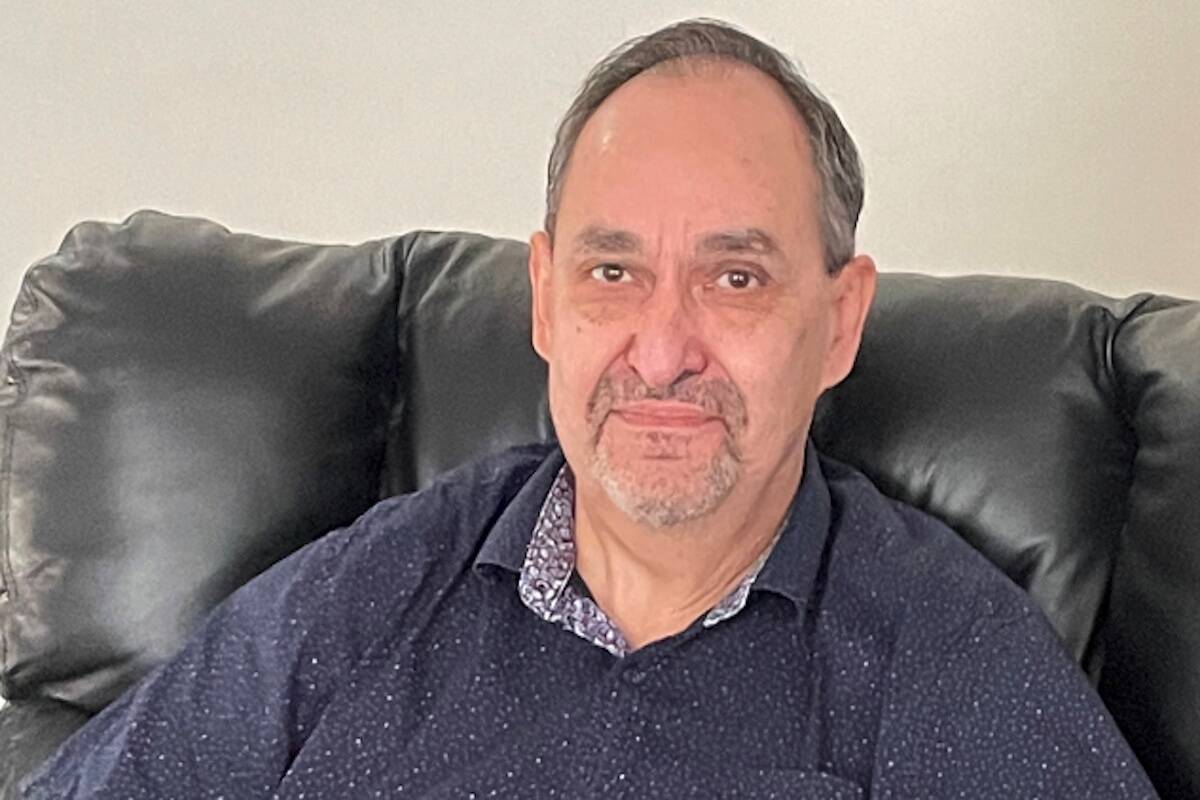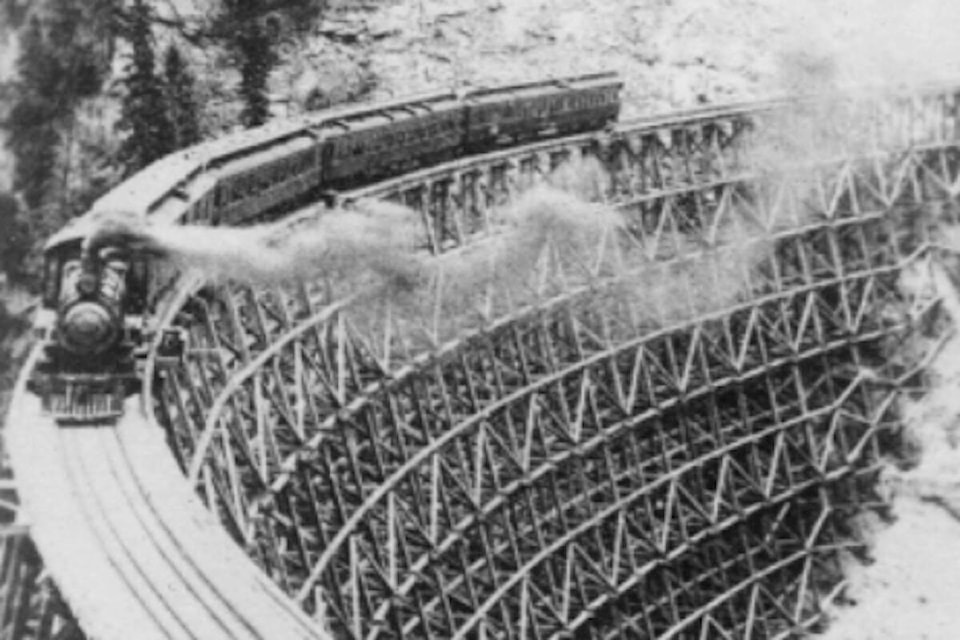~BW Uzelman
The Okanagan has an incredibly interesting history of transportation. The Canadian Pacific Railway (CPR) introduced sternwheelers, in 1893, to serve communities on Okanagan Lake from Penticton to Vernon. Construction of the Kettle Valley Railway (KVR), owned by the CPR, began in 1910. By 1916, the KVR effectively traversed southern BC, linking with existing CPR lines at Midway and Hope. The KVR also connected with the north-bound sternwheelers at Penticton. And at Okanagan Landing (5km west of Vernon), the sternwheelers met the CPR branch line from Sicamous, built in 1893. The CPR owned and operated a completely integrated transportation system in the Okanagan in the early 20th century.
When the KVR began operation, surely, the golden age of Okanagan transportation commenced. While the access to and the convenience of today’s transportation tops that of the early twentieth century, nothing can compete with the romance of steam. And nothing, at that time, maybe even now, could compete with the comfort, and the sights and sounds, offered by both the steam-powered sternwheelers and trains.
The varied vistas along the KVR line – from Hope to Princeton, across the South Okanagan Valley, then through the Myra Canyon and the Boundary Country to Midway – are stunning. Near the beginning of the line at Hope, the Coquihalla Canyon is lush and green, but also rugged. As the line ascends to the summit of the pass, the surroundings, though not as verdant, are still breath-taking.
The first community of significance after Hope is Princeton. As the train proceeds eastward from there, it nears Summerland in the Okanagan Valley. Here the dry mountainsides contrast with the irrigated, green valley bottom, punctuated by the blue waters of Okanagan Lake. After stopping at Penticton, the train proceeds north and east. It meanders through the majestic Myra Canyon, after which it turns south toward the gentler, pastoral mountain and valley landscapes of the Boundary Country.
The headquarters of the KVR was located in Penticton. The population of the town doubled with the arrival of the railway. It must have been a bustling place during and following the construction of the line. The town became a major interior transportation hub. The Penticton Railway Station was strategically placed on Okanagan Lake adjacent to the CPR docks and the arriving sternwheelers.
Freight trains and two passenger trains served Penticton. The Kettle Valley Express travelled west to Vancouver, and the Kootenay Express journeyed east to Nelson. Incoming train passengers could spend the night in Penticton‚Äôs own luxury railroad hotel, the Incola, completed in 1912. In the morning, they could board a sternwheeler with stops at the smaller communities along Okanagan Lake and at ¡¡ß…Ò…Á and Vernon (at Okanagan Landing). Sternwheeler passengers could also board the train on the CPR branch line at Okanagan Landing to access the CPR‚Äôs mainline at Sicamous.
The sternwheelers offered transport for people and goods when there was little alternative. Roads at the turn of the century were rudimentary, and a direct rail connection between the North and South Okanagan has never existed. The steamers carried fruit and timber products from valley communities to the railroads in the north and south, and delivered finished goods and products coming from outside the valley. The largest of the steamers, the impressive SS Sicamous, plied the waters of Okanagan Lake from 1914 to 1936. It offered gourmet dining and staterooms and services for the less affluent, too.
But the end for both the steamers and the KVR was looming. Land transport improved dramatically from 1900 to 1930, both by rail and by road. The sternwheelers were no longer required by the mid-30’s. As roads and freight and passenger vehicles continued to improve, the KVR, too, was destined to disappear. The grand, old Incola Hotel, as well, was sold off by the CPR. It was ultimately demolished.
The Coquihalla Division of the KVR, after 1959, was rarely open. The line was extremely mountainous, subject to severe weather and very costly to maintain. In January 1961, the Division closed for the winter. It never reopened. The KVR trains could access the CPR mainline at Spence’s Bridge, but the direct route to Hope, and Vancouver, was gone. The remainder of the KVR line closed, piece by piece.
The closure of the direct Penticton to Hope route, perhaps, marked the entire KVR for extinction. It also marked the end of an era – the end of the Okanagan’s golden age of transportation.

Bruce W Uzelman
I grew up in Paradise Hill, a village in Northwestern Saskatchewan. I come from a large family. My parents instilled good values, but yet afforded us, my seven siblings and I, much freedom to do the things we wished to do. I spent my early years exploring the hills and forests and fields surrounding the village, a great way to come of age. My parents owned a successful general store. My siblings and I were required to help out in the business, no choices allowed there!
I attended the University of Saskatchewan in Saskatoon. I considered studying journalism at one point, but did not ultimately pursue that. However, I obtained a Bachelor of Arts, Advanced with majors in Economics and Political Science in 1982.
My career has consisted exclusively of small business, primarily restaurant and retail. I was originally based in Alberta, and then BC, first in Summerland, then Victoria and finally ¡¡ß…Ò…Á (for over 20 years). I was married in Alberta, and we have two daughters, who have returned to Alberta as adults for career reasons, as did my now ex-wife. My daughters are successful, and now have families of their own.
I have maintained a healthy interest in politics throughout my adult years, and wish to put that and my research skills to work as a political columnist.
Contact: urbangeneral@shaw.ca
Like us on and follow us on .



